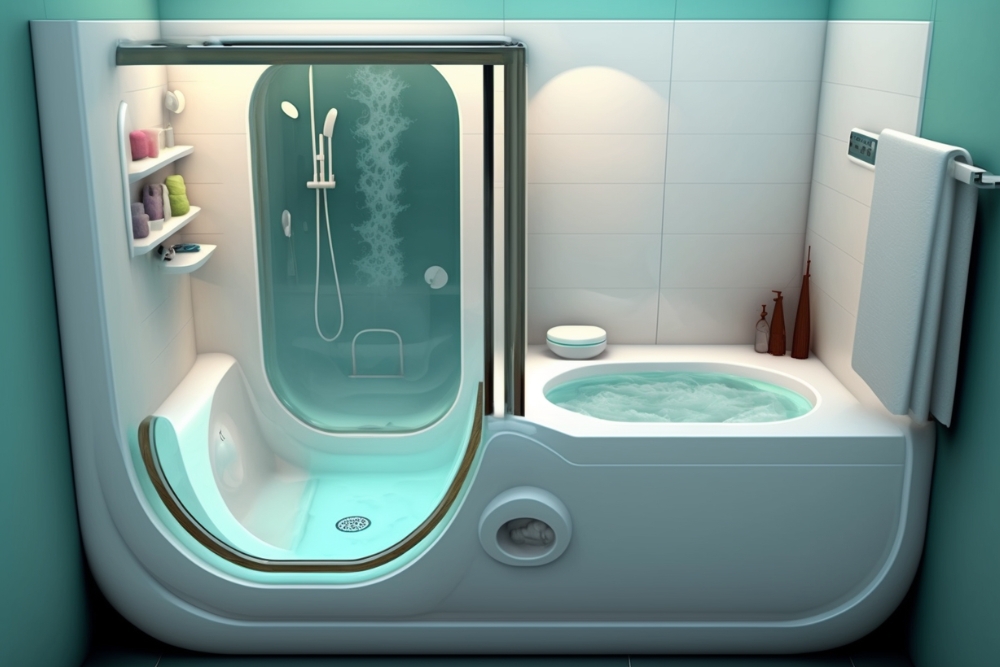Waterproof Wall Panels: The Smart Bathroom Remodeling Solution
Bathroom remodeling projects are increasingly turning to waterproof wall panels as homeowners discover the numerous advantages these innovative surfaces offer over traditional ceramic tiles. These modern alternatives provide superior moisture protection, faster installation, and reduced maintenance requirements, making them an excellent choice for contemporary bathroom renovations.

Why Waterproof Wall Panels Are a Smart Alternative to Bathroom Tiles
Traditional bathroom tiles require extensive preparation, including waterproof membranes, grout lines, and regular sealing to prevent water damage. Waterproof wall panels eliminate many of these concerns by providing seamless, non-porous surfaces that prevent moisture penetration entirely.
Unlike tiles, which can crack or allow water to seep through grout lines, waterproof panels create a continuous barrier that protects underlying walls from humidity and direct water contact. This superior protection significantly reduces the risk of mold growth, structural damage, and costly repairs down the line. Additionally, panels can be installed over existing surfaces in many cases, reducing demolition costs and project timelines.
The installation process is considerably faster than traditional tiling, often requiring just one or two days compared to a week or more for ceramic installations. This efficiency stems from the large format panels that cover substantial wall areas quickly and the elimination of grouting time.
Different Types of Waterproof Wall Panels and Their Pros and Cons
Several types of waterproof wall panels are available for bathroom applications, each with distinct characteristics and benefits.
PVC panels offer excellent water resistance and affordability but may lack the premium appearance some homeowners desire. These lightweight options are easy to clean and maintain, though they can be susceptible to scratching and may show wear over time.
Acrylic panels provide a more luxurious appearance with excellent durability and scratch resistance. They maintain their color and finish longer than PVC options but typically cost more upfront. These panels often feature realistic stone or tile patterns that closely mimic natural materials.
Composite panels, made from materials like high-pressure laminate or solid surface compounds, offer superior durability and design flexibility. They can withstand heavy use and maintain their appearance for decades, though they represent the highest initial investment among panel options.
Fiberglass reinforced plastic panels provide industrial-strength water resistance and are virtually indestructible, making them ideal for high-traffic bathrooms. However, their utilitarian appearance may not suit all design preferences.
Step-by-Step Guide to Installing Waterproof Panels in Your Bathroom
Proper installation begins with thorough surface preparation. Clean existing walls and repair any damage, ensuring surfaces are level and dry. Remove fixtures, trim, and accessories that might interfere with panel placement.
Measure wall dimensions carefully and plan panel layouts to minimize cuts and joints. Most panels can be cut with standard woodworking tools, but always wear appropriate safety equipment and follow manufacturer guidelines.
Apply adhesive according to manufacturer specifications, typically using a zigzag pattern across the panel back. Press panels firmly against walls, starting from one corner and working systematically across each surface. Use appropriate fasteners at edges and corners as recommended.
Seal all joints and edges with waterproof sealant designed for bathroom use. Pay special attention to corners, edges around fixtures, and anywhere panels meet other surfaces. Allow proper curing time before exposing the installation to moisture.
Install trim pieces and accessories using appropriate fasteners that won’t compromise the waterproof seal. Test all seals and joints before considering the project complete.
Low-Maintenance Benefits of Waterproof Panels for Wet Areas
The maintenance advantages of waterproof panels represent one of their most compelling features for busy homeowners. Unlike tiled surfaces that require regular grout cleaning and periodic resealing, panels need only routine cleaning with standard bathroom cleaners.
The non-porous surface prevents soap scum, mineral deposits, and bacteria from penetrating the material, making cleaning faster and more effective. Most panels can be cleaned with simple soap and water or common household cleaners without special treatments or harsh chemicals.
Since panels eliminate grout lines entirely, there are no crevices where mold and mildew can develop. This characteristic is particularly valuable in high-humidity environments where traditional tiles often require frequent maintenance to prevent discoloration and health concerns.
The seamless surface also means fewer places for dirt and grime to accumulate, resulting in bathrooms that stay cleaner longer with less effort.
Trendy Styles and Finishes in Modern Waterproof Bathroom Wall Panels
Contemporary waterproof panels offer an impressive range of design options that rival or exceed traditional materials. Modern manufacturing techniques create realistic textures and patterns that closely mimic natural stone, wood, ceramic, and metal finishes.
Large format panels with minimalist designs are particularly popular, creating clean, uninterrupted surfaces that make small bathrooms appear larger. Marble and granite patterns remain classic choices, while wood-look panels bring warmth to modern bathroom designs.
Metallic finishes and industrial-inspired textures appeal to homeowners seeking contemporary aesthetics. Some panels feature subtle geometric patterns or textured surfaces that add visual interest without overwhelming the space.
Color trends favor neutral palettes, with whites, grays, and earth tones dominating current offerings. However, bold accent walls using darker or more dramatic patterns are increasingly popular for creating focal points in bathroom designs.
| Panel Type | Average Cost per sq ft | Key Features | Best Use Case |
|---|---|---|---|
| PVC Panels | $3-6 | Lightweight, affordable, easy installation | Budget-conscious renovations |
| Acrylic Panels | $8-15 | Scratch-resistant, premium appearance | Mid-range bathroom upgrades |
| Composite Panels | $12-25 | Maximum durability, design flexibility | High-end renovations |
| Fiberglass Panels | $6-12 | Industrial strength, virtually indestructible | Commercial or heavy-use applications |
Prices, rates, or cost estimates mentioned in this article are based on the latest available information but may change over time. Independent research is advised before making financial decisions.
Waterproof wall panels represent a smart evolution in bathroom design, offering superior performance, easier maintenance, and attractive aesthetics compared to traditional options. Their combination of practical benefits and design flexibility makes them an excellent choice for homeowners planning bathroom renovations, whether for budget-conscious updates or luxury transformations.




